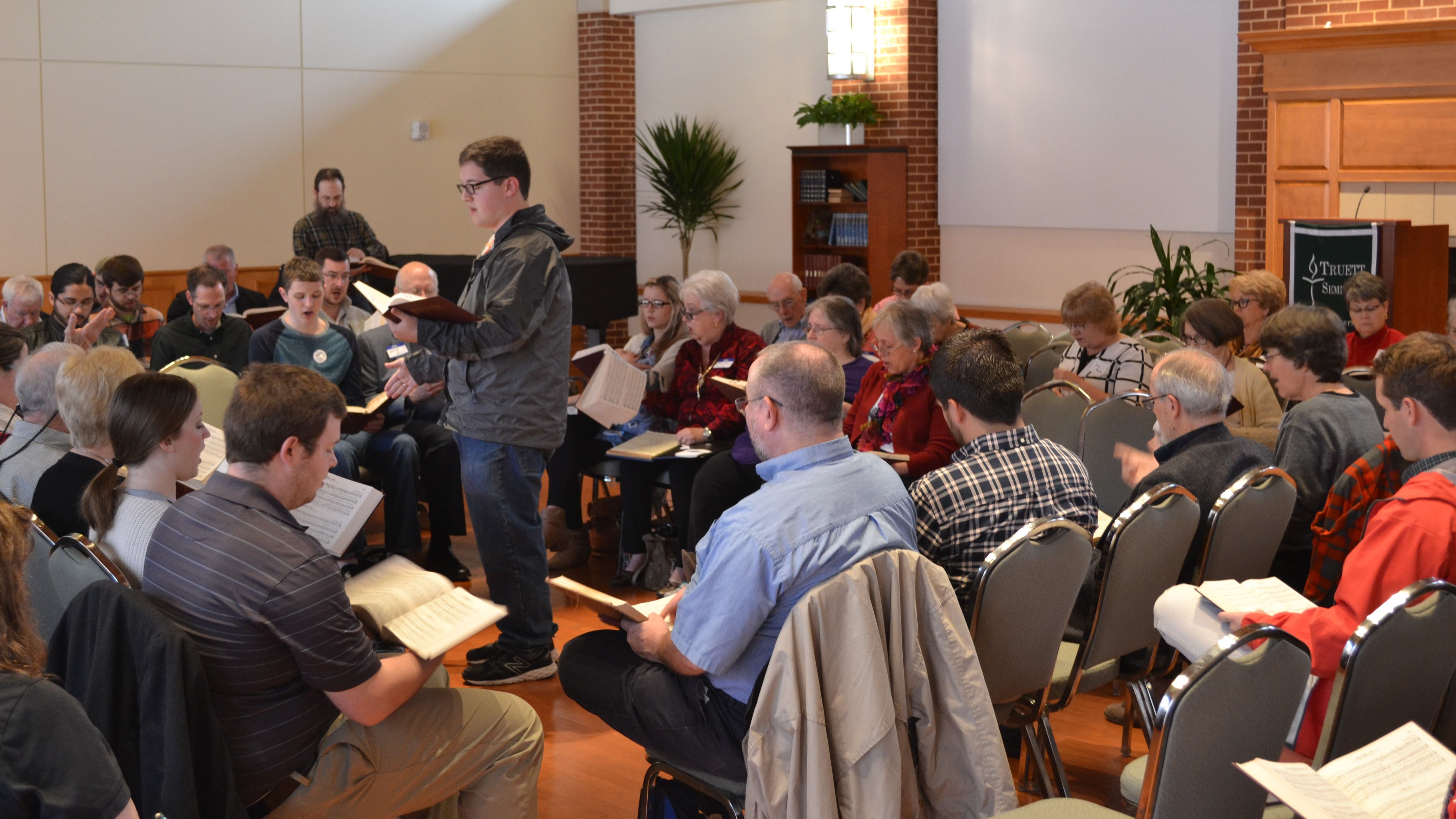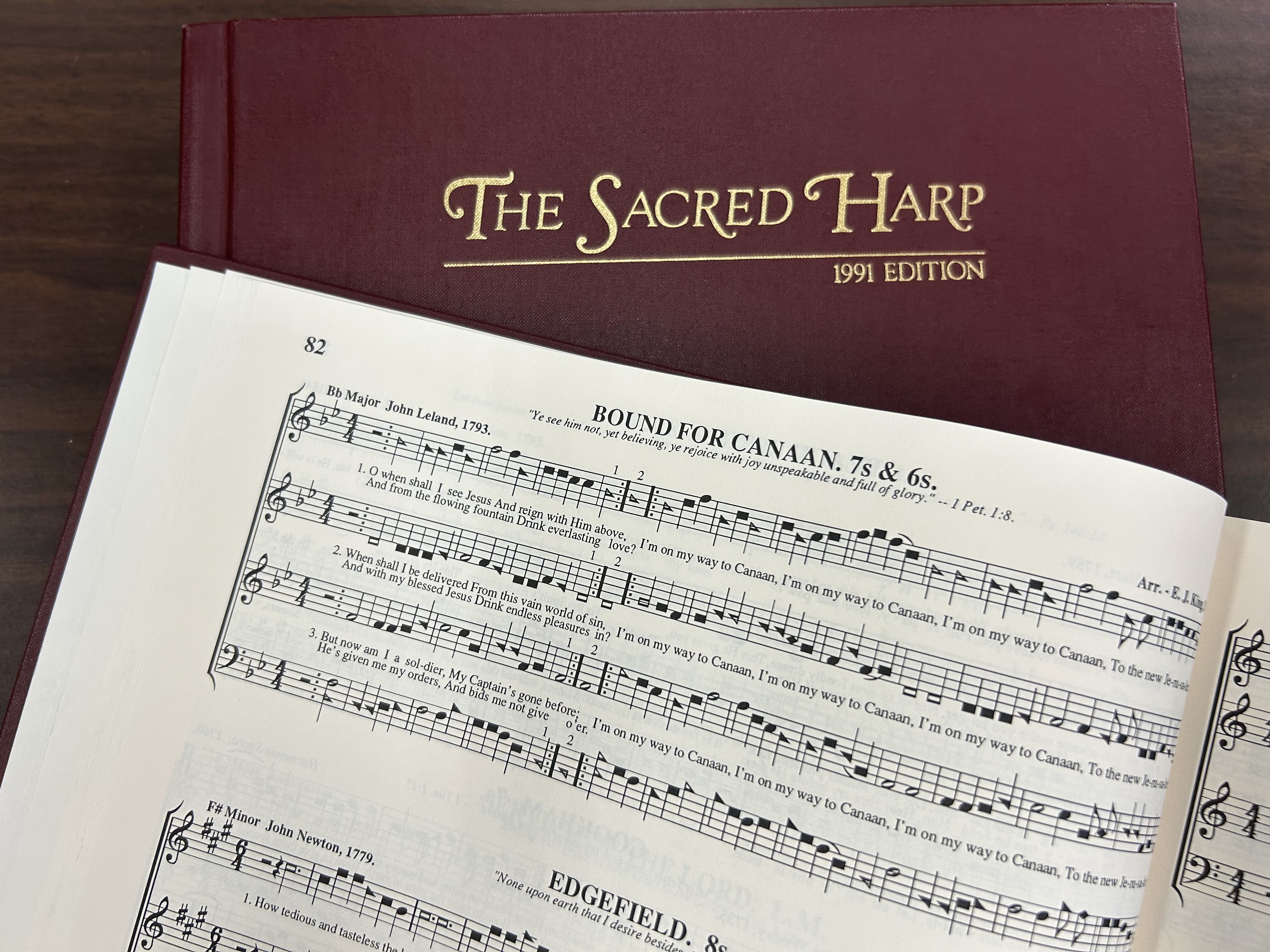Sacred Harp Sing Returns to Baylor University Joining Voices in Four-Part Harmony


The Baylor Center for Christian Music Studies in the School of Music hosts its annual Sacred Harp Sing after two-year hiatus
Media Contact: Shelby Cefaratti-Bertin, Baylor University Media and Public Relations | 254-327-8012
Follow us on Twitter: @BaylorUMedia
Find this news release on our website: www.baylor.edu/news
WACO, Texas (Feb. 7, 2023) – Human voices come together without instruments or rehearsal, carrying a four-part harmony to celebrate a centuries-old tradition where every voice is holy. This is Sacred Harp singing, and it is returning to Baylor University after a two-year hiatus.
The Center for Christian Music Studies in the Baylor School of Music will host the annual Sacred Harp Sing from 9:30 a.m. to 3 p.m. Saturday, Feb. 11, in the Piper Great Hall of George W. Truett Theological Seminary, 1100 S. Third St.
A "singing school" will begin at 9:30 a.m., followed by the formal opening of the singing at 10 a.m. A light lunch will be served at noon, and the event will conclude at 3 p.m. Participants will be able to borrow a copy of the “The Sacred Harp” songbook at the meeting. This event is free and open to the public.
“Sacred Harp singings always embody hospitality, and people are welcomed heartily. If you are new to Sacred Harp, it is a bit like stepping into the home of a yet-to-be-discovered friend,” said Randall Bradley, D.M.A., The Ben H. Williams Professor of Church Music, director of the church music program and the Center for Christian Music Studies at Baylor.
“The Sacred Harp” was first published by B.F. White and E.J. King in 1844. It is based on Southern folk hymns and incorporates the Sacred Harp shape-note music. Notes are written as a triangle, oval, square and diamond shape, each representing the notes “fa, sol, la, mi,” respectively and known as the “fasola” or “shaped note” technique. Originally developed in the early 1800s, the method was created to teach people who could not read music how to sing. Singers are taught to sing the shapes before singing the words, thus being able to sing in four-part harmony.
Traditionally, singers sit in a square facing each other, with a space in the center for the leader. Anyone can lead in songs, including children, making it a genuinely multigenerational celebration of voices. It is a practice that is fully inclusive and democratic in nature.
“The singings are intergenerational – children to very old people attend and lead songs. There will be seasoned singers as well as people who come to listen and observe,” Bradley said. “To attend a Sacred Harp sing is to observe the best of our world – traditions passed along, the inclusion of everyone, warm hospitality and heartfelt sounds that draw you into the music.”
Many of the hymns included in “The Sacred Harp” are familiar, including “Amazing Grace,” “Brethren, We Have Met to Worship,” and “What Wondrous Love Is This.” The Baylor singing uses the 1991 edition of the book.
While Sacred Harp has historically been a rural-based art form, it has become more popular in large metropolitan centers in America and around the world in the past few decades.
“I look forward to relishing in the beauty of the sounds of the music. I’ve heard folk music all over the world, and to me, no music is sung with greater fervor and physicality than Sacred Harp,” Bradley said.
The Sacred Harp Sing began in 2000 at Baylor when several veteran Sacred Harp singers decided to bring a singing event to campus. The Baylor Center for Christian Music Studies took over sponsorship the following year. The event was held annually on the second Saturday of February until 2020, when the event had to be put on hold due to the pandemic.
“There are many people who attend Sacred Harp Singings regularly, sometimes traveling long distances to a singing,” Bradley said. “I look forward to seeing the people I've gotten to know through the years and have not seen since 2020.”
ABOUT BAYLOR UNIVERSITY
Baylor University is a private Christian University and a nationally ranked Research 1 institution. The University provides a vibrant campus community for more than 20,000 students by blending interdisciplinary research with an international reputation for educational excellence and a faculty commitment to teaching and scholarship. Chartered in 1845 by the Republic of Texas through the efforts of Baptist pioneers, Baylor is the oldest continually operating University in Texas. Located in Waco, Baylor welcomes students from all 50 states and more than 100 countries to study a broad range of degrees among its 12 nationally recognized academic divisions.
ABOUT THE BAYLOR UNIVERSITY SCHOOL OF MUSIC
Celebrating more than 100 years of musical excellence, the Baylor University School of Music provides transformational experiences that prepare students for careers in music. Students thrive in a Christian environment characterized by a nurturing resident faculty, an unwavering pursuit of musical excellence, a global perspective, dedication to service and devotion to faith. They investigate the rich musical and cultural heritage of the past, develop superior musical skills and knowledge in the present, and explore and create new modes of musical expression for the future. While preparing for future leadership roles, students join with School of Music faculty in enhancing the quality of community life, enriching the larger culture and making Baylor a place in which heart, mind and soul coalesce. Baylor’s School of Music is a member of the National Association of Schools of Music and the Texas Association of Music Schools. Degree programs include bachelor’s and master’s degrees in performance, music education and academic majors, as well as doctoral degrees in church music. Degrees leading to the Bachelor of Music Education conform to certification requirements of the Texas Education Agency. Visit baylor.edu/music to learn more.